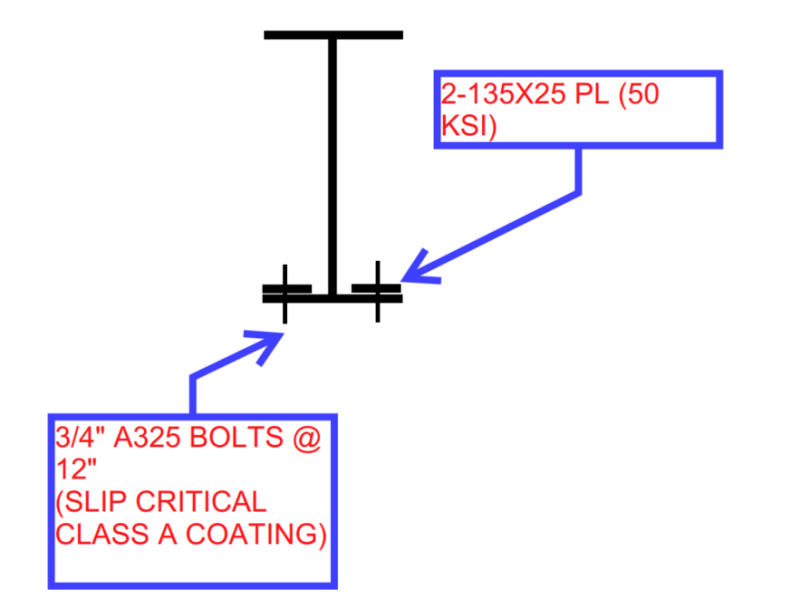Good afternoon,
I have a situation where we are bolting cover plates to the topside of the bottom flange of an existing galvanized member.
I can satisfy the shear flow demand with one bolt at the center of each cover plate.
Do you foresee any stability issues with the single bolt arrangement?
Typically we would use a bottom plate with welds on each side.

Thank you!
I have a situation where we are bolting cover plates to the topside of the bottom flange of an existing galvanized member.
I can satisfy the shear flow demand with one bolt at the center of each cover plate.
Do you foresee any stability issues with the single bolt arrangement?
Typically we would use a bottom plate with welds on each side.

Thank you!
